We all know that when students get to partner up and work with each other in a productive way, student engagement goes up. However, in middle school ELA it can be a little tricky to figure out places in our daily structure to incorporate partner and small group work. Here is the daily structure I use during reading units. This structure varies slightly during writing units.

I love having a daily structure that I put the reading lesson content into versus having to figure out a new activity to do with students each day. The daily structure also helps with classroom management because students know what to expect and thrive on consistent routine. If I’m not intentional though, this structure can involve a lot of teacher talk and a lot of independent student work and not enough time for students to interact with each other.
That’s why today I’m going to give three practical, easy-to-implement ideas for how to get students to work cooperatively with one another in middle school language arts.
Strategy One: Partner Question Collaboration
I am sharing this strategy first because I am pretty excited about it. It’s something I can’t wait to try with my students in the fall. How it works is there is a Partner A and a Partner B. Both students start by independently answering one or more questions. Then students “coach” each other through how they answered the questions and revise their original answers as needed. I’ll show you a visual of what this could look like with my Sentence Stalking resource.
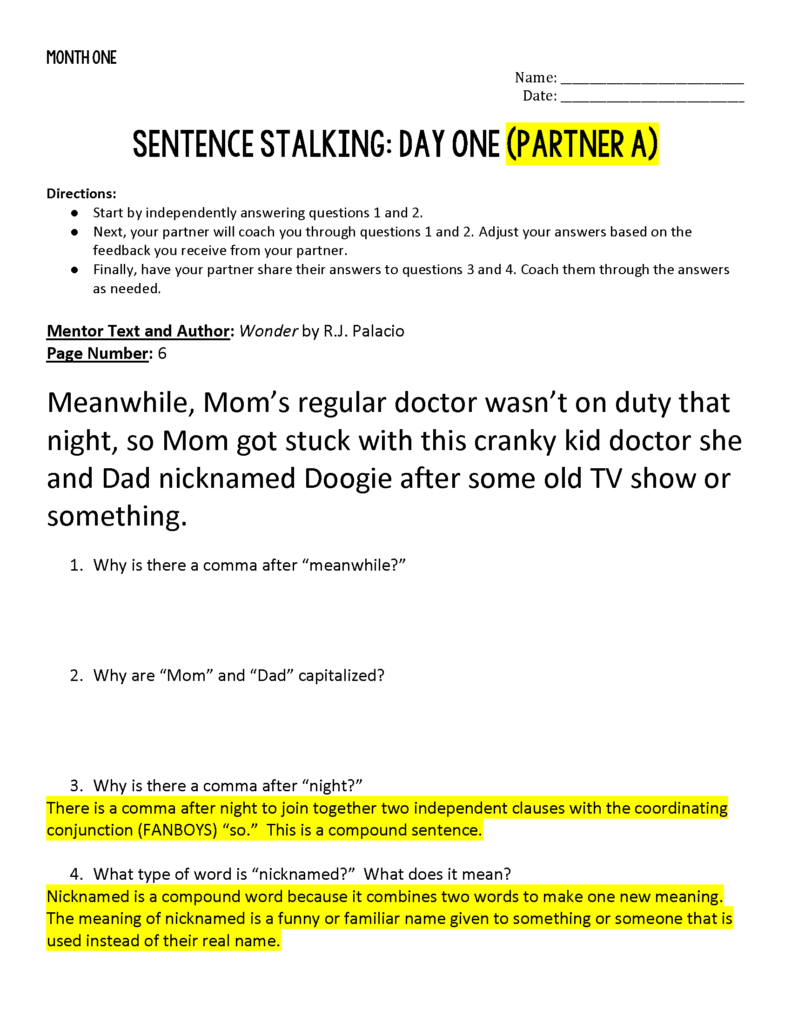
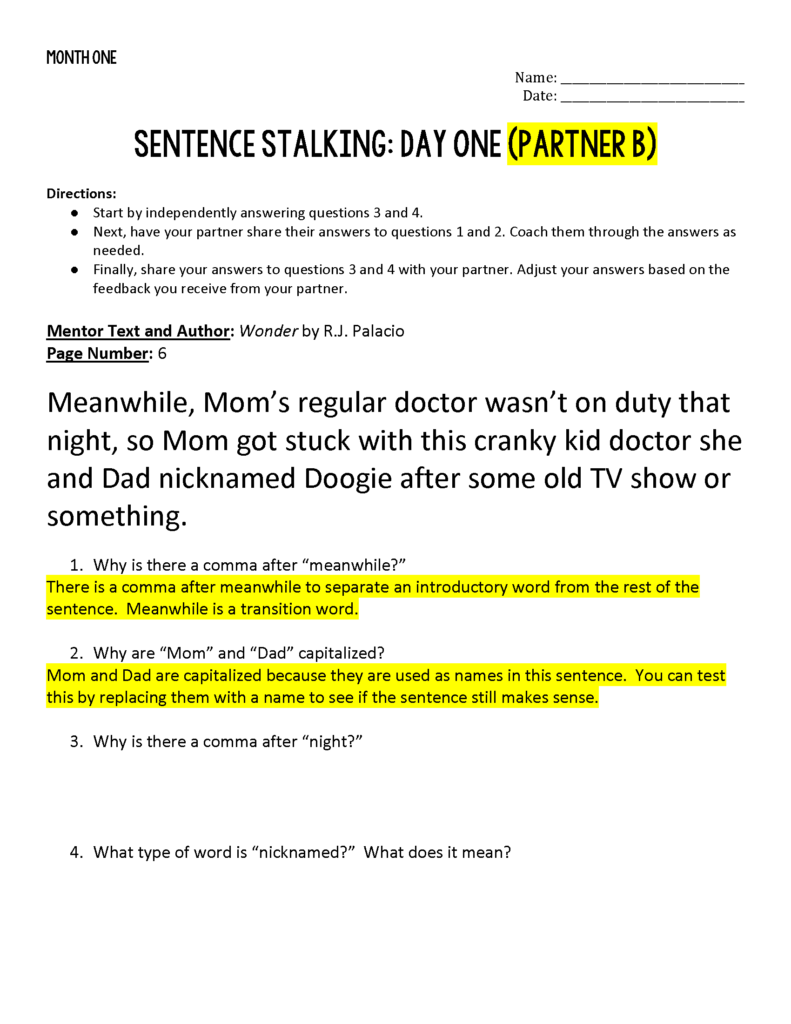
As you can see with the example above, Partner A answers different questions than Partner B, and each partner has the answers to the opposite questions. As this process is introduced to students, I recommend using a fishbowl activity to show students what it would look like to coach their partner through the answers versus just reading the answers.
This practice excites me because a lot of learning can happen here. Instead of students independently answering all of the questions and then listening to the teacher go through the answers one by one, students begin with a shorter task and work directly with one other student to go through each answer. This is a great way to mix up what is normally an independent learning task and give students independence and ownership over their learning.
This can be done with any independent learning activity that involves questions and answers where an answer key can be provided. I can see this working well with grammar activities, reading comprehension questions, and vocabulary practice. I start our class period out with Word Study, so this is a natural place where I can incorporate this practice with the activities we already do several time a week.
If you are interested in trying Partner Question Collaboration with your students using Sentence Stalking, click here to download five days for free.
You can also purchase my Sentence Stalking resource by month or as a bundle by clicking here. Each of the 180 days of Sentence Stalking includes a partner question collaboration activity like the one pictured above.
Strategy Two: Partner Reading Fluency Practice
This past school year, I committed to using this practice every day with my 7th grade ELA students during days we were in reading units. If I do the quick math, that means across 6 reading units that are each about 20 school days long, students had the opportunity to read aloud to their partners 120 times. That’s 120 minutes of reading aloud across the school year. I should also note that I never using reading practices such as popcorn reading or round robin reading for reading fluency in small groups or whole class.
How this practice works is I sit students next to someone in their book club / literature circles book group and provide a daily page number from each of the small group books. This is a page students read from the previous day. Whenever possible, I select a page that contained an important plot event.
I prompt Partner A to begin, and all students who are Partner A read for one minute (until I tell them to stop). Next, Partner B reads that same page for one minute. I run the timer and tell students when to start and stop. Once we get the routine for this down, it takes about 3-4 minutes of class time total from beginning to end. At the beginning of the school year, students felt a little awkward reading aloud to their partner, but by the end of the school year it was just second nature. There is no doubt in my mind that students’ fluency and confidence in reading aloud improved across the school year.
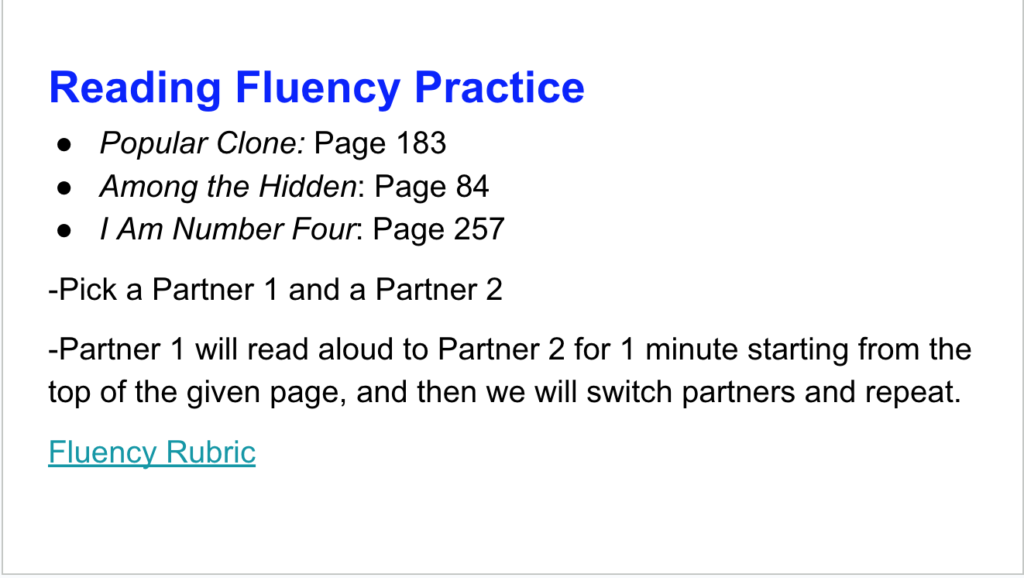
I also talk to students about the different dimensions of fluency. I stress that reading fluently doesn’t mean reading fast.
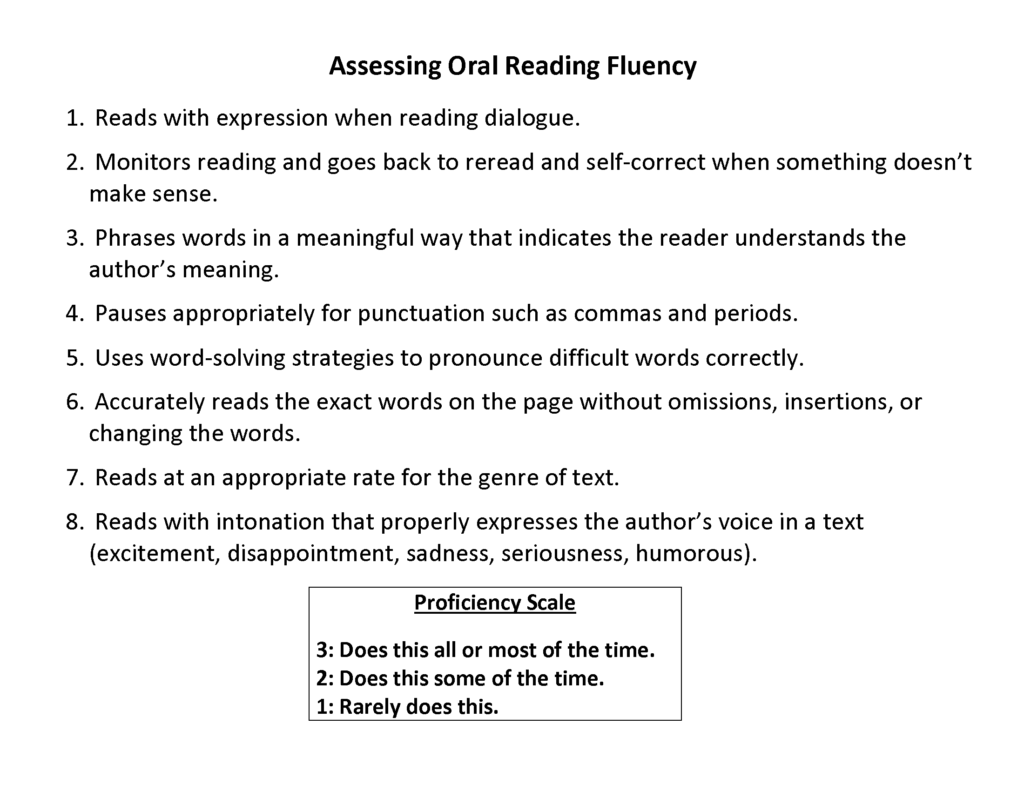
This is a great way to get students to interact with each other daily in a structured, low-stakes activity. It also seems to open the door for more natural conversations about their books as we move further into the daily lesson.
Strategy Three: Interactive Read Aloud Question Share-Out
If you do a daily interactive read aloud during reading units, this is a perfect strategy to get your students up and moving and interacting with many different classmates. I love using this as a transition activity between the interactive read aloud and the reading lesson for the day.
How it works is you ask a question based on the day’s reading with two choices for the answer. Using this format helps students verbally practice how to flip the question and provide evidence to support their stance. This will translate well to writing about reading. Posing the question with two choices gives all students a low-stakes opportunity to share their thinking. Ask students to stand up and share what choice they pick and why with at least three other classmates. Here is an example slide I use for this activity.
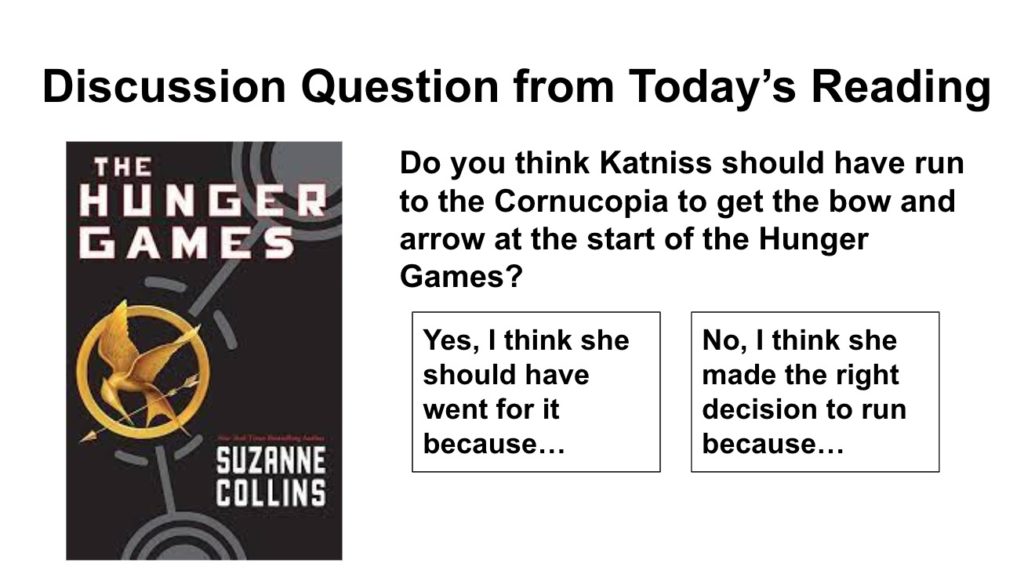
Well, there you have it. Three ways to incorporate student collaboration into the daily teaching framework you already use. I hope that at least one of these strategies spoke to you. The more we can get students interacting and learning with each other, the more engagement students will have during the learning opportunities we offer.





